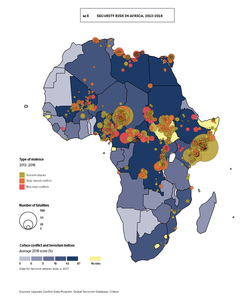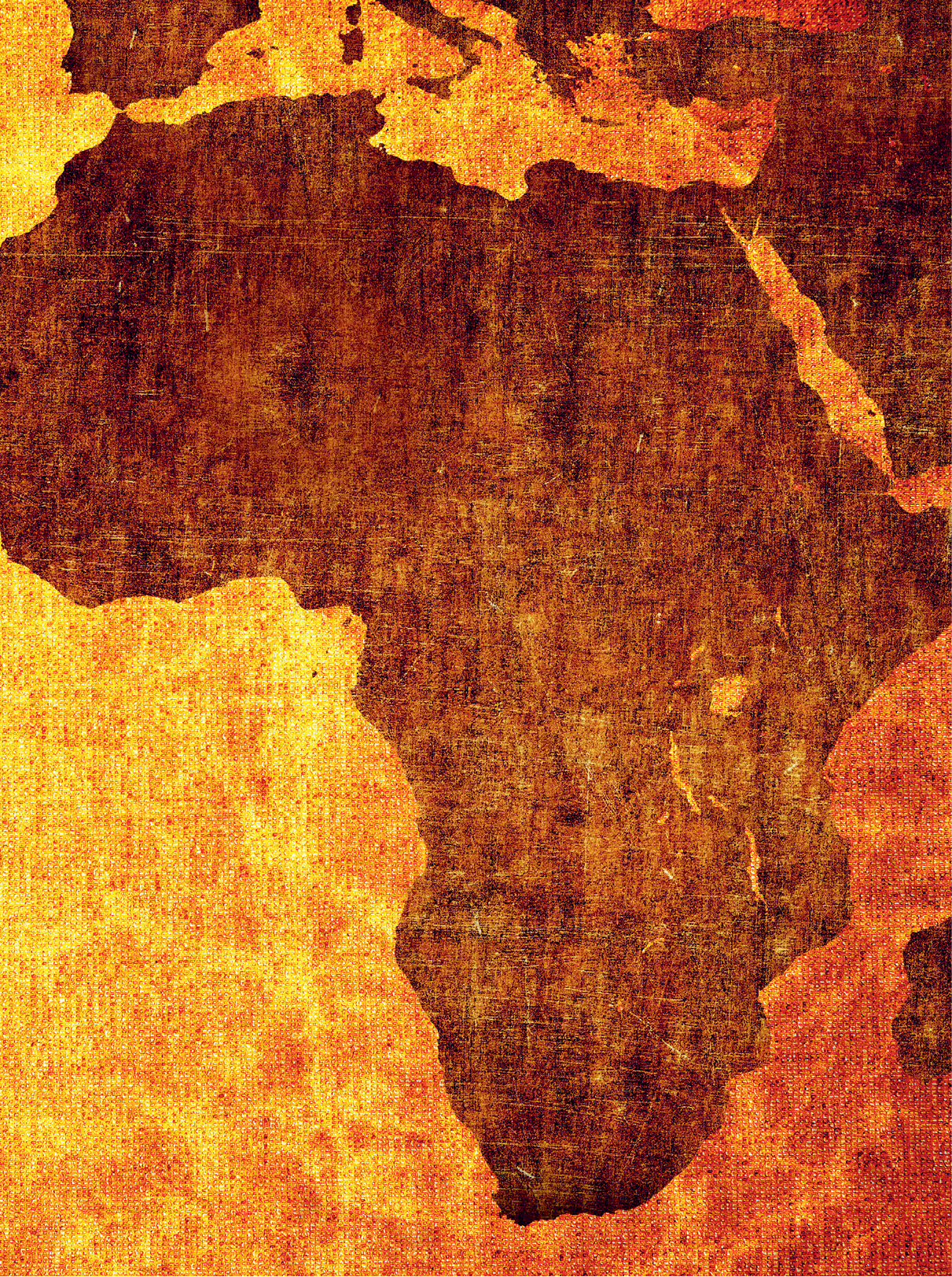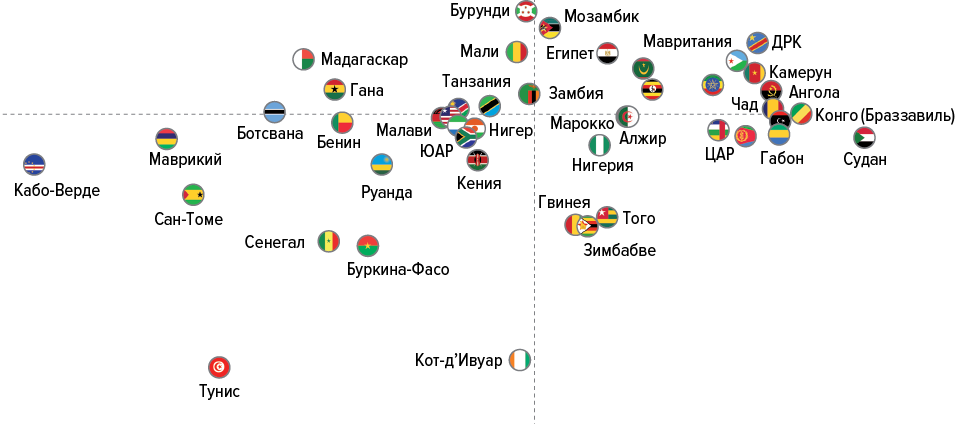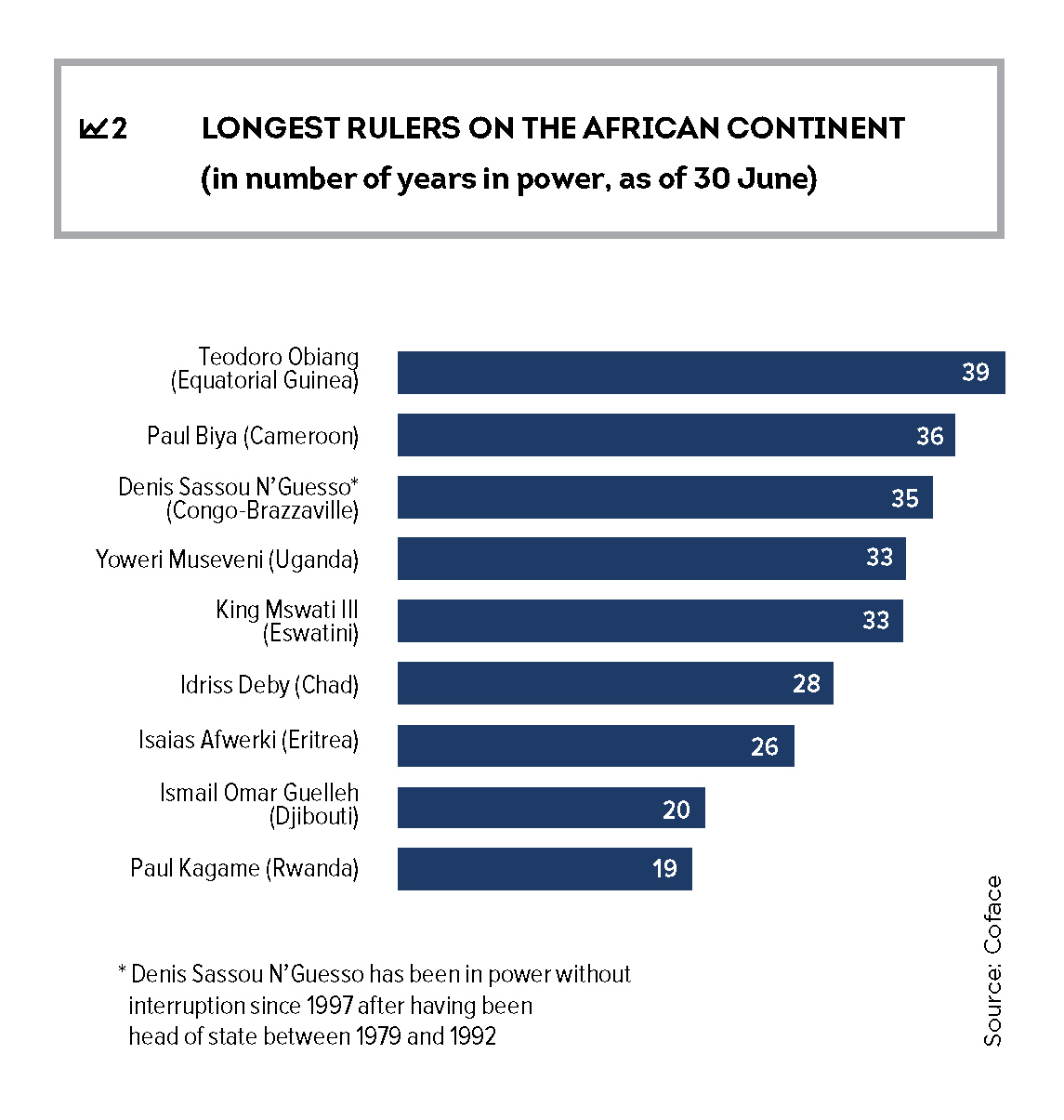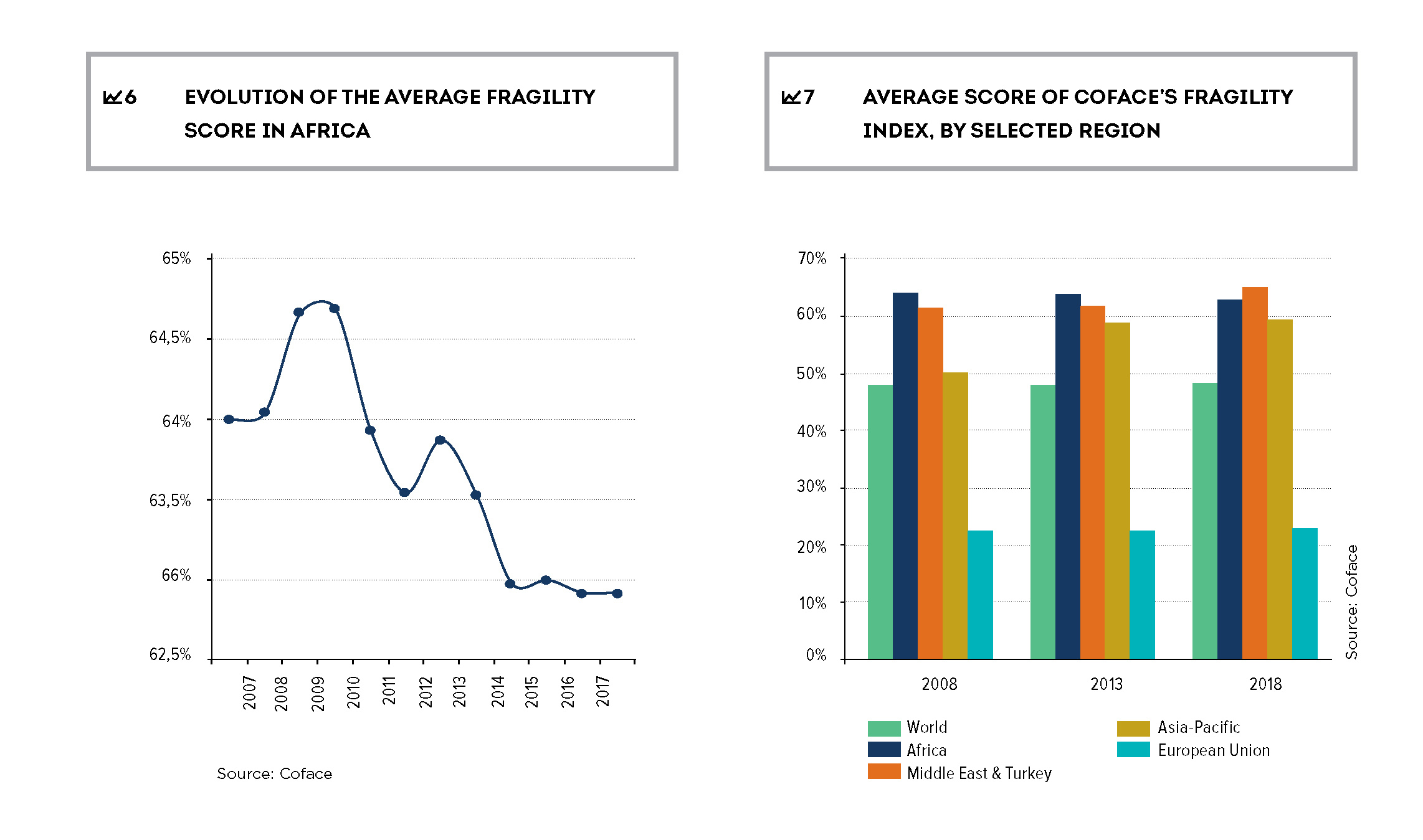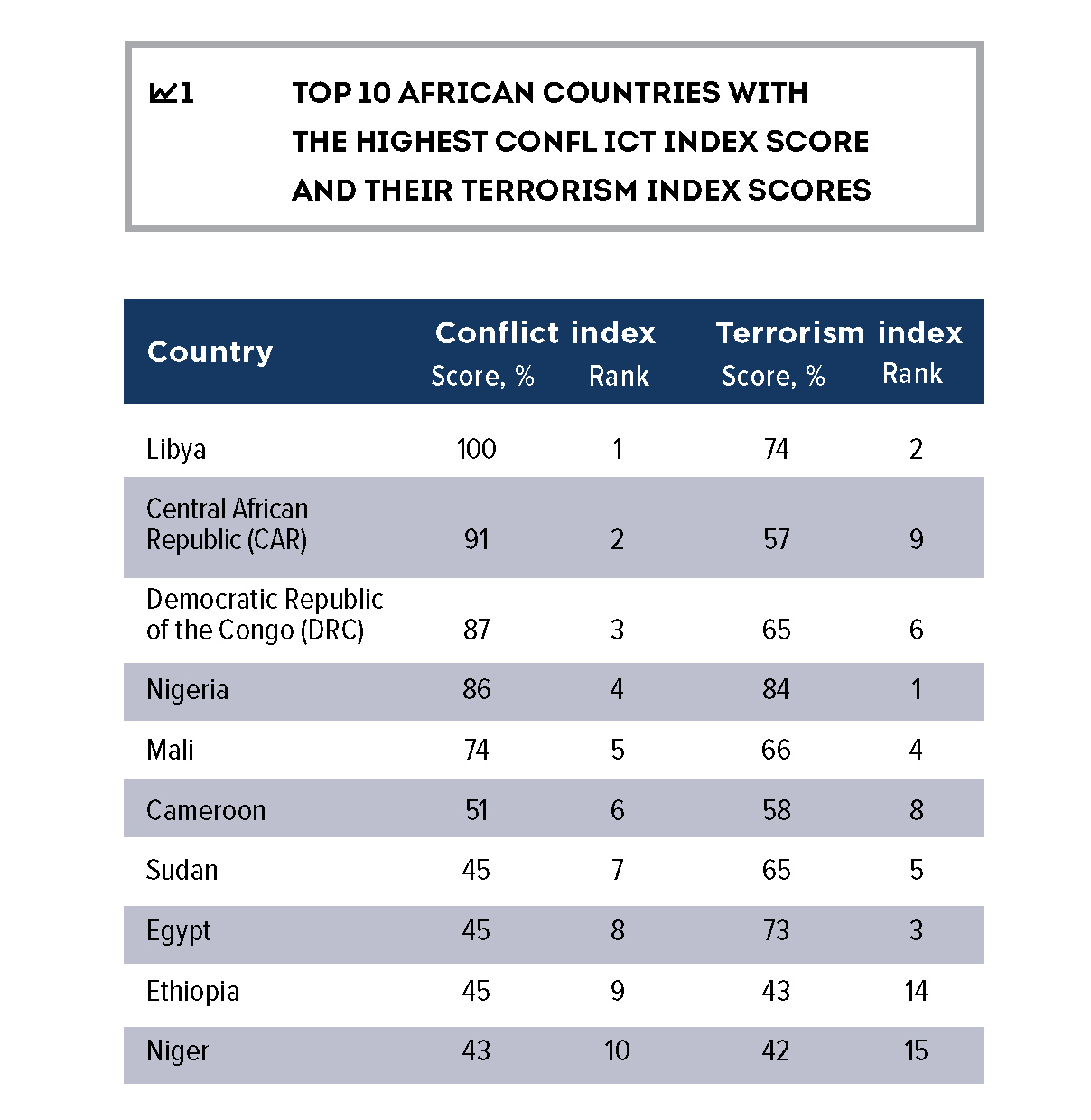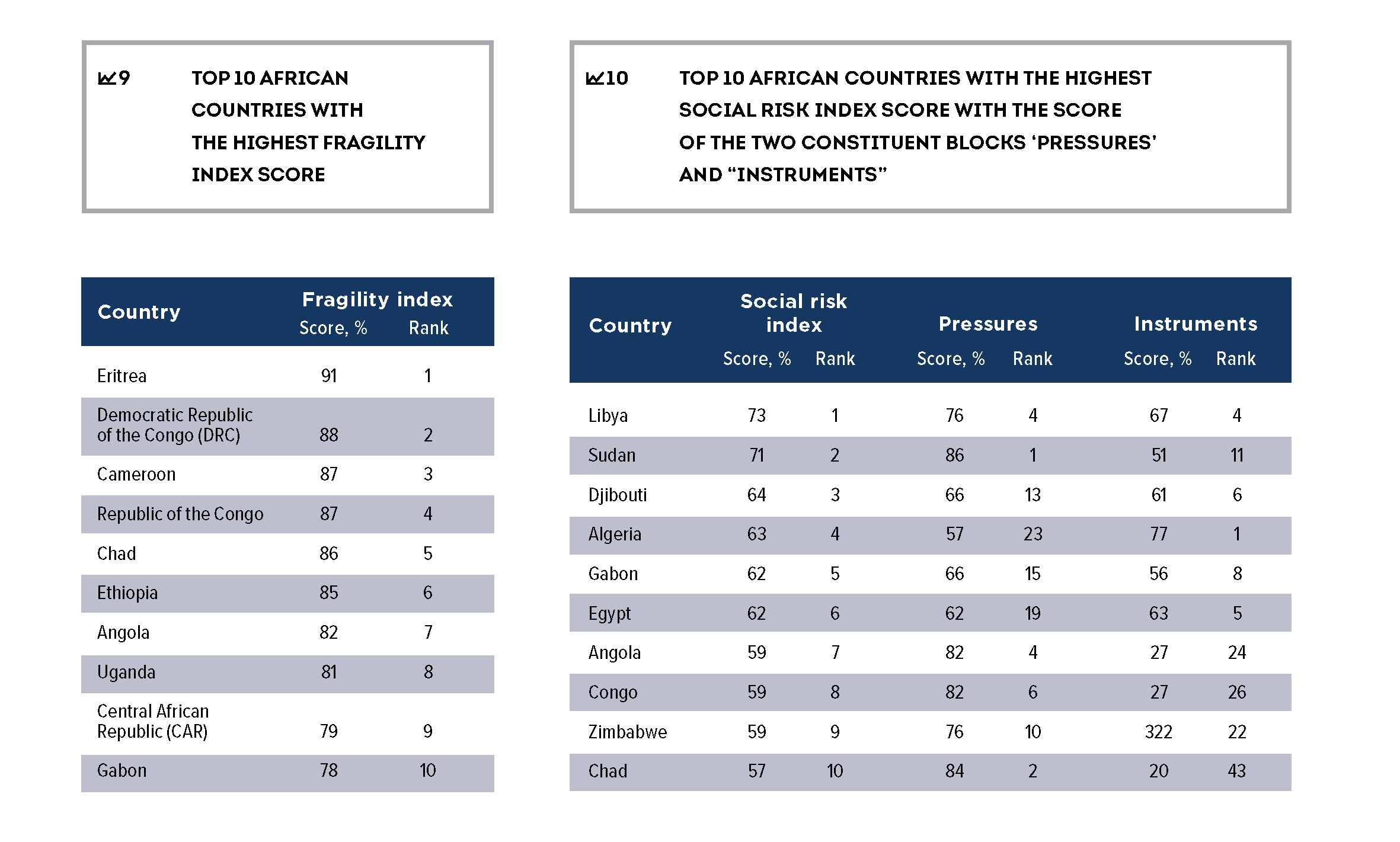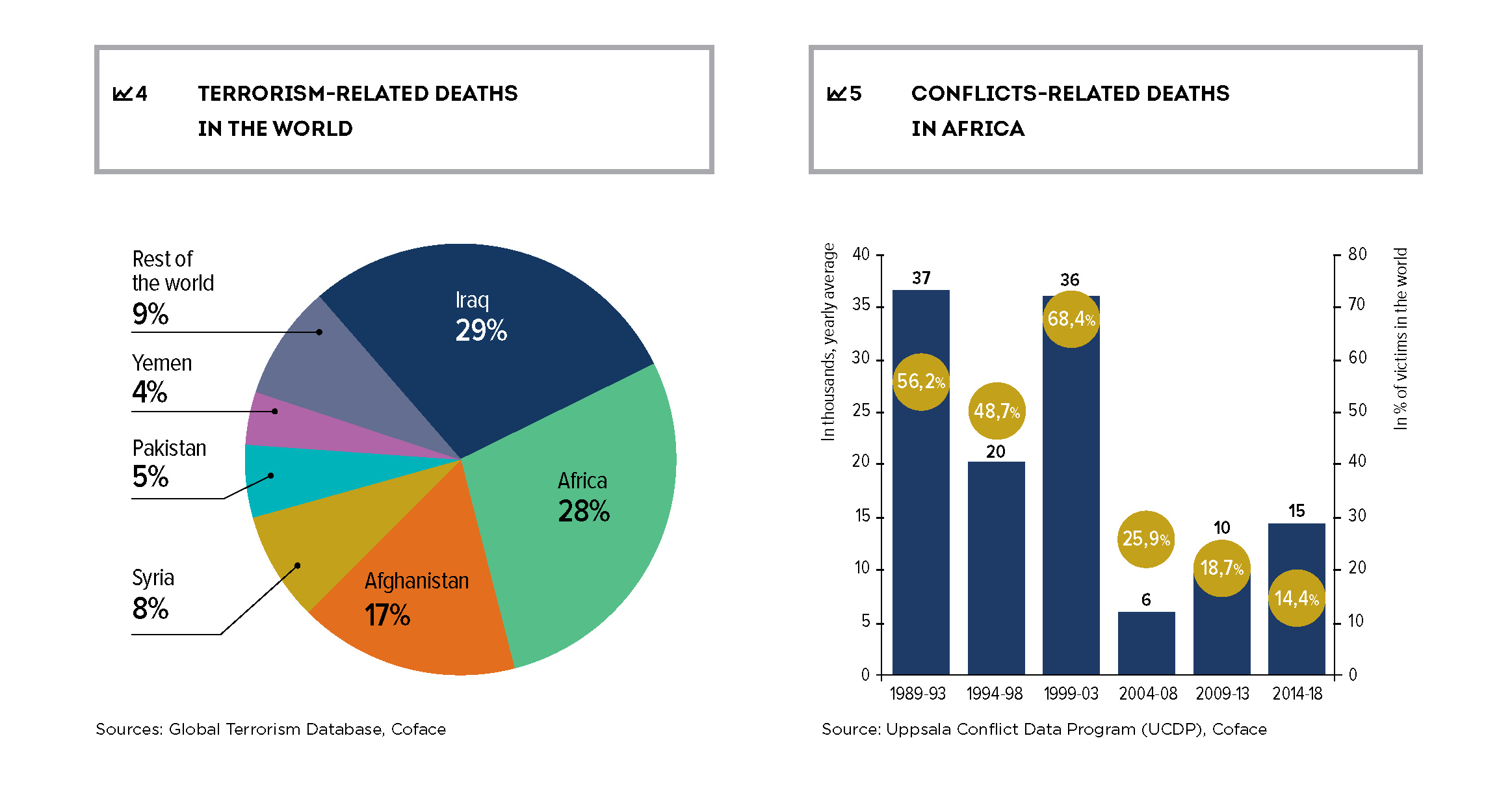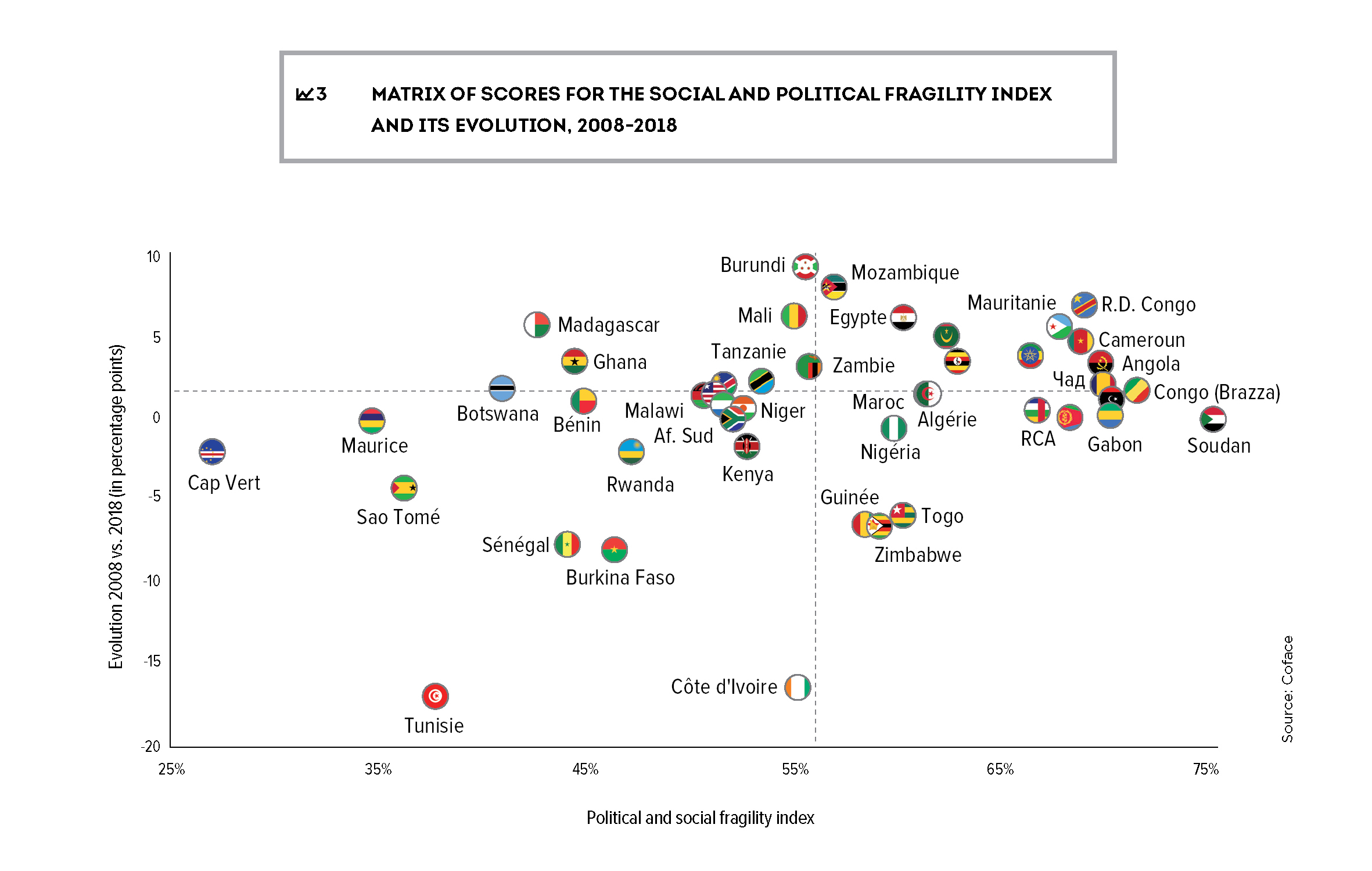Africa: Too Intense
Africa has seen a bevy of political events in recent months. After the deterioration of the security situation in the Sahel, as well as the forced departures of historical leaders from Algeria and Sudan via the streets, where will the political risks manifest in the second half of the year? Using its quantitative political risk model, Coface intends to identify – beyond the pace dictated by current events – recent political risk trends and thus the countries to be monitored.
Over the recent decades, regular conflicts of varying intensities and natures have marked Africa, leading notably to a decline in investment and trade flows, delaying the development of some African countries. Recent years have seen a resurgence of conflicts on the continent, mainly as a result of the activities of various Islamist groups, particularly in the Sahel region, mobilizing the armed forces of certain states on the continent and targeting civilian populations. Conflicts of political origin – sometimes mixed with ethnic, religious or even linguistic considerations – also remain present in Africa (Libya, Central African Republic, Democratic Republic of the Congo, Cameroon...).
Our indices of political violence also confirm that violent events (conflicts and terrorist acts), although more localised, have become relatively common again, particularly in the Sahel, compared to the beginning of the 21st century: compared to 2008, there were almost twice as many conflicts across the continent in 2018.
Conflict and terrorism
continues in Africa
As Coface reported in 2017, the world is experiencing an upsurge in conflicts that has not abated in recent years: despite a decline in 2018 after the historical record set in 2017, the number of conflicts has increased by 70% since 2008, with 2.2 times more victims. Over the past five years, the number of casualties has exceeded the 70,000 mark each year for the third time in 30 years (after the 1990-1991 periods, at the height of the Gulf War, and 1999-2000, marked by the fratricidal war between Ethiopia and Eritrea). At the same time, terrorism is spreading as another form of political violence.
Often described as a continent prone to conflict and terrorism, data from the indices compiled by Coface confirms this. In the 2019 version of the Conflict Risk Index, 25 of the 45 African countries evaluated9 have a non-zero score. In total, only 52 countries in the world are in this situation. African countries therefore contribute to the overall upward trend in global conflicts. The increase in conflicts on the continent is driven in particular by those that do not involve a state. At both global and continental levels, this type of conflict has tripled since the beginning of the decade, but is nevertheless increasing more rapidly in Africa. The region is therefore, by far, the region with the largest number of non-state conflicts. The proliferation of clashes between armed militias in Libya, the CAR and the DRC contributes to this trend, as do clashes between Oromo and Somali in Ethiopia, and between Berom farmers, Christians, and Fulani herders, Muslims, in the Plateau State of Nigeria.
While the increase in the number of non-state conflicts is remarkable, it should not overshadow those involving a state, which have also surged over the past five years, mainly due to the fight against armed Islamist groups, including those affiliated to the Islamic State (IS). This is particularly the case in the Sahel and around Lake Chad, justifying the place of Nigeria, Mali, Chad and Niger as the countries with the highest conflict scores. In 2018, Egypt and Libya were also engaged in conflicts against IS. In addition, among the highest scores on the continent is also Cameroon, where clashes in the English-speaking regions between the army and the defense forces of the self-proclaimed Republic of Ambazonia intensified during an election year that saw President Paul Biya win a seventh term. In Sudan, the struggle between government forces and resistance movements in the conflict areas united within the Sudan Revolutionary Front continued in the country, and notably testifies to the still precarious security situation in Darfur.
In addition, with the increase in the number of organized non-governmental armed groups targeting civilian populations, the increase in the number of conflicts is concomitant with the increase in terrorist acts in Africa. It is therefore unsurprising that among the 25 countries with a conflict score above the minimum threshold of 0%, 24 also have a non-zero terrorism score (the exception being Eritrea).
Our indices of political violence also confirm that violent events (conflicts and terrorist acts), although more localised, have become relatively common again, particularly in the Sahel, compared to the beginning of the 21st century: compared to 2008, there were almost twice as many conflicts across the continent in 2018.
Moreover, as events in North Africa and the Middle East in 2011 have shown, as mobilisation instruments develop, the exasperation of populations, fueled by socio-economic pressures exposes some countries to the risk of future instability. Although large-scale conflicts, as in Libya, or regime changes are not a given, a fragile socio-economic context can, in the long term, cause unrest that can generate, at a minimum, uncertainty in the political environment. Our political and social fragility index indicates that 10 countries – Angola, Cameroon, Chad, Djibouti, Egypt, Ethiopia, Mauritania, Mozambique, Uganda and the DRC – could be or continue to be affected in the foreseeable future. The increase in mobilization instruments is one of the factors behind the increased risk. This dynamic, in force throughout the continent, could potentially lead to a multiplication of destabilizing political events in Africa in the longer-term.
continues in Africa
As Coface reported in 2017, the world is experiencing an upsurge in conflicts that has not abated in recent years: despite a decline in 2018 after the historical record set in 2017, the number of conflicts has increased by 70% since 2008, with 2.2 times more victims. Over the past five years, the number of casualties has exceeded the 70,000 mark each year for the third time in 30 years (after the 1990-1991 periods, at the height of the Gulf War, and 1999-2000, marked by the fratricidal war between Ethiopia and Eritrea). At the same time, terrorism is spreading as another form of political violence.
Often described as a continent prone to conflict and terrorism, data from the indices compiled by Coface confirms this. In the 2019 version of the Conflict Risk Index, 25 of the 45 African countries evaluated9 have a non-zero score. In total, only 52 countries in the world are in this situation. African countries therefore contribute to the overall upward trend in global conflicts. The increase in conflicts on the continent is driven in particular by those that do not involve a state. At both global and continental levels, this type of conflict has tripled since the beginning of the decade, but is nevertheless increasing more rapidly in Africa. The region is therefore, by far, the region with the largest number of non-state conflicts. The proliferation of clashes between armed militias in Libya, the CAR and the DRC contributes to this trend, as do clashes between Oromo and Somali in Ethiopia, and between Berom farmers, Christians, and Fulani herders, Muslims, in the Plateau State of Nigeria.
While the increase in the number of non-state conflicts is remarkable, it should not overshadow those involving a state, which have also surged over the past five years, mainly due to the fight against armed Islamist groups, including those affiliated to the Islamic State (IS). This is particularly the case in the Sahel and around Lake Chad, justifying the place of Nigeria, Mali, Chad and Niger as the countries with the highest conflict scores. In 2018, Egypt and Libya were also engaged in conflicts against IS. In addition, among the highest scores on the continent is also Cameroon, where clashes in the English-speaking regions between the army and the defense forces of the self-proclaimed Republic of Ambazonia intensified during an election year that saw President Paul Biya win a seventh term. In Sudan, the struggle between government forces and resistance movements in the conflict areas united within the Sudan Revolutionary Front continued in the country, and notably testifies to the still precarious security situation in Darfur.
In addition, with the increase in the number of organized non-governmental armed groups targeting civilian populations, the increase in the number of conflicts is concomitant with the increase in terrorist acts in Africa. It is therefore unsurprising that among the 25 countries with a conflict score above the minimum threshold of 0%, 24 also have a non-zero terrorism score (the exception being Eritrea).
The sharp increase in the number of conflicts on the continent since the beginning of the decade has been accompanied by an increase in the number of victims associated with them: there were on average just under 15,000 victims in Africa per year, during the period 2014-2018, almost three times as many as between 2004 and 2008. In contrast, the average number of deaths from conflict over the last five years remains half that recorded in the 1990s, when it exceeded 30,000 deaths per year. At the same time, Africa’s contribution to the record level of victims in global conflicts is weakening, dwarfed by the conflicts in Syria (23% of the world’s conflict victims between 2014 and 2018) and Afghanistan (19%), which have proved more deadly than all conflicts combined in Africa.
In contrast, over the past five years (2013-2017), more than 28% of terrorist victims have been killed on the African continent, an increase of 10 percentage points over the previous period. Nevertheless, again, a handful of countries – mainly in the Middle East (Iraq, Yemen, Syria) and South Asia (Afghanistan and Pakistan) – are far more affected by terrorism.
In Africa, terrorist activity by Islamist groups dominates, particularly in conflict areas: in the Sahel10, as well as in Libya and Egypt. Nearly 60% of the victims of terrorism in Africa are concentrated in these eight countries. Kenya and Mozambique, with scores of 62% and 44% respectively, also rank in the first quartile of the riskiest countries in our index, mainly due to the activity of Islamist terrorist groups (al-Shabaab in Kenya and Ansar al-Sunna in Mozambique). Finally, in addition to Cameroon, which is particularly affected by Boko Haram’s incursions into the Far North, the presence of CAR and DRC among the ten riskiest countries in our index provides additional examples of how conflict and terrorism regularly go hand in hand on the continent.
In Africa, terrorist activity by Islamist groups dominates, particularly in conflict areas: in the Sahel10, as well as in Libya and Egypt. Nearly 60% of the victims of terrorism in Africa are concentrated in these eight countries. Kenya and Mozambique, with scores of 62% and 44% respectively, also rank in the first quartile of the riskiest countries in our index, mainly due to the activity of Islamist terrorist groups (al-Shabaab in Kenya and Ansar al-Sunna in Mozambique). Finally, in addition to Cameroon, which is particularly affected by Boko Haram’s incursions into the Far North, the presence of CAR and DRC among the ten riskiest countries in our index provides additional examples of how conflict and terrorism regularly go hand in hand on the continent.
A map highlights all these dynamics, and notably the high geographical concentration in a few risk areas. It also displays the insecurity in the Sahel (particularly in the Lake Chad region), the impact of the Somali security challenge on Kenya, and also the tensions in Kivu and the Kamwina Nsapu insurgency in the DRC. The map shows that conflicts on the African continent are generally relatively localized: an increase in conflicts does not necessarily imply an increase in the geographical extent of the conflict. In addition, the map highlights areas where risk is low. Southern African countries are mostly spared, with the notable exception of South Africa, where political assassination attempts drive up the score. More surprisingly, unlike its peers in the G5 Sahel force, Mauritania’s score remains at 0%, having not experienced a terrorist attack on its territory since 2011. With a score of 1%, Morocco justifies its status as a ‘safe country’ in the region11.
Although instructive, the risk indices of conflict and terrorism, based on past observation, off er only a vision of extreme episodes of violence. However, political risk is also about understanding the moments of disruption that lead to a profound change in a country’s political structure.
Although instructive, the risk indices of conflict and terrorism, based on past observation, off er only a vision of extreme episodes of violence. However, political risk is also about understanding the moments of disruption that lead to a profound change in a country’s political structure.


